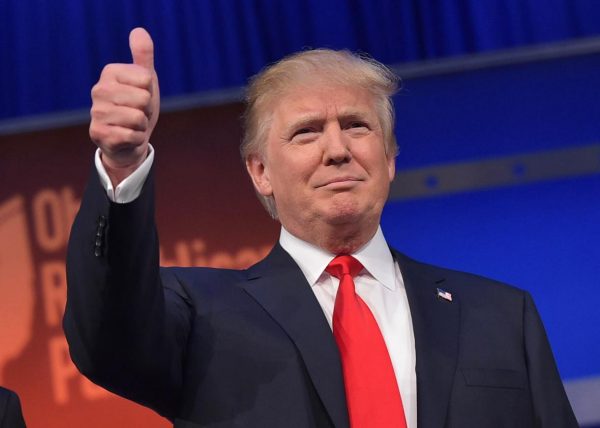
On January 20, Donald J. Trump was inaugurated as the 45th president of the United States of America. The billionaire-cum-president vowed to “make America great again”, with a focus on “buy American and hire American”.
in the money with NESBERT RUWO & JOTHAM MAKARUDZE
On assuming office, the newly elected president wasted no time in signing executive orders for US to exit from a regional economic bloc, the Trans-Pacific Partnership (TPP) and to renegotiate the North American Free Trade Agreement (Nafta). The new administration is pushing for trade policies that “promote American industry, protect American workers, and raise American wages” but fostering bilateral trade deals as opposed to regional pacts.
Nafta is a three-country accord negotiated between the US, Canada and Mexico and came into being in January 1994. With a major focus on liberalising trade in agriculture, textiles and automobile manufacturing, Nafta’s terms provided for easier trade tariffs among the three countries.
In its first two decades, the pact resulted in an increase in regional trade from about $290 billion (1993) to at least R1,1 trillion in 2016. US foreign direct investment stock in Mexico grew from $15 billion to more than $100 billion. For US, Canada and Mexico have thus become huge markets for its products and services, combined accounting for more than one third of US exports.
It’s obvious that the pact has had a significant positive impact on the US economy.
On the other hand, critics have argued that it is to blame for rising US job losses and wage stagnation as companies shift production to lower wage cost Mexico. It is also argued that this has led to the widening of the US trade balance with Mexico from $1,7 billion surplus to an estimated current deficit of $60 billion. An estimated 600 000 US jobs have been lost over the two decades of Nafta.
Ford Motors has already cancelled a planned $1,6 billion assembly plant in Mexico and is rechanneling that investment back into the US. Indiana-based Carrier Corporation, a US home improvement chain has suspended plans to expand in Mexico. Fiat Chrysler has threatened to pull out of Mexico completely if the US imposes tariffs on imported cars, which proposed tariffs are putting other major car manufacturers on the edge.
- Chamisa under fire over US$120K donation
- Mavhunga puts DeMbare into Chibuku quarterfinals
- Pension funds bet on Cabora Bassa oilfields
- Councils defy govt fire tender directive
Keep Reading
The Trans-Pacific Partnership (TPP) is a 12-nation trade agreement between Australia, Brunei, Canada, Chile, Japan, Malaysia, Mexico, New Zealand, Peru, Singapore, the United States and Vietnam. The pact would have created a free-trade zone accounting for at least 40% of the world’s economy. TPP was envisaged to create a permanent trade tie between the US and East Asia to create an economic behemoth against the rising Asian tiger, China.
It is now seen that Trump’s decision to “permanently withdraw” from TPP, will reverse a free-trade strategy adopted by his predecessors dating back to the Cold War. Senator John McCain sees the decision as a “serious mistake” which would signal “American disengagement” in the Asia-Pacific region. Australia’s trade minister, Steven Ciobo, said that other members of the trade pact were exploring whether to create a “TPP minus one,” without the United States. However, technically, without the US, TPP is dead as Article 30.5 of the agreement requires that it be ratified by at least six countries who represent 85% of the TPP’s combined GDP (which requires both USA and Japan ratifying it). The withdrawal could be a winning ticket for China as it entrenches its global economic leadership.
The new US administration’s actions more likely would mean structural changes for the US economy and could be the beginning of a new global framework — egocentric-biased economic policies, weaker European Union, rise of populism, and the rising prominence of China global economic leadership. US action follows UK Brexit referendum that shook the global equity and financial markets. The far-reaching implications of the Brexit are that it could trigger similar style exits by other countries from their respective political and economic blocs. Could this be the beginning of the end of globalisation as we have known it?
There is a growing feeling within major economies like US and UK, which view immigration as creating socio, economic and political problems at home, especially in the wake of EU migrant crisis, and that globalisation is killing global manufacturing and service jobs in favour of China and India, respectively.
But UK is seeking a post-Brexit cooperation with the US to create a joint responsibility to “lead the world”, seemingly in response to Russia, increasing terrorist threats, and the growing prominence of China. However, internal populism could scupper the union as each country seeks to become more internally self-sufficient, as UK’s prime minister Theresa May said during a recent visit to US that US “renew your nation just as we renew ours”.
At the recently concluded World Economic Forum, China said it would defend globalisation against populist forces that want to end free trade. Beijing is already pushing for its own trade agreement known as the Regional Comprehensive Economic Partnership (RCEP) as an alternative to the TPP. It includes 10 countries, such as Japan and Australia who are also in the TPP. RCEP accounts for close to 50% of the world population and 30% of global GDP.
Our view is that the current trends are pointing to a shift in the balance of power from the advanced countries to emerging markets, particularly to China and India, similar to a shift of power in the 20th century from the pioneer industrialiser, Britain (and rest of Europe) to the US.
Nesbert Ruwo (CFA) and Jotham Makarudze (CFA) are investment professionals based in South Africa. They can be contacted on [email protected]











